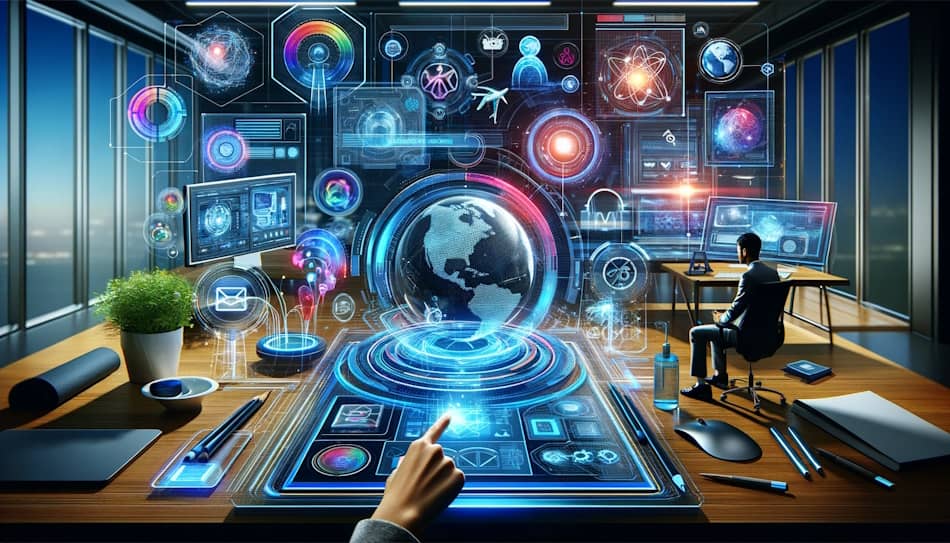Web design is constantly evolving. It is a creative discipline shaped by technological advancements and shifting user preferences - a moving target that transforms daily. With this in mind, Full Stack Industries, a website design company, has offered a glimpse into the future of this dynamic field, sharing its expert take on web trends, emerging technologies, and bold predictions for what lies ahead.
Key Trends to Watch
Website design is all about the user. From seamless experiences to accessibility and engagement, here are how designers can futureproof their approach.
- The Primacy of UX: User experience (UX) is no longer an afterthought but a core principle. Excellent web design prioritises intuitive navigation and meaningful interactions that cultivate strong customer relationships and brand loyalty.
- The Power of Microinteractions: Subtle animations that respond to user actions add a layer of delight without being overwhelming. Microinteractions keep websites engaging while respecting the primacy of content.
- AI's Expanding Role: AI-powered tools streamline content generation, tailoring output to specific audiences and optimising website performance. Expect AI to play an even bigger role in the design process itself.
- Accessibility as the Norm: Designers are increasingly committed to creating websites accessible to everyone, regardless of ability. Accessibility features will be the standard, not the exception.
- Interactive Experiences: As attention spans dwindle, interactive layouts, illustrations, graphics, and videos keep visitors engaged. The key is using these elements strategically to enhance the website's core message.
The future of web design belongs to intuitive UX, engaging micro-interactions, AI-powered optimisation, inclusive accessibility, and strategic interactivity. By embracing these principles, websites will become more effective, enjoyable, and accessible.
Transformative Technologies on the Horizon
- New Interfaces: Virtual reality (VR), augmented reality (AR), spatial computing, and voice interfaces will reshape how we interact with websites, allowing for profoundly immersive and personalised experiences.
- Static Site Generation + Headless CMS: This powerful duo offers developers and businesses greater flexibility, security, and scalability while enabling the delivery of dynamic content previously impossible using static approaches. Consider using leading headless CMS for Next.js projects, since its foundation further optimizes these processes, providing enhanced scalability and performance.
- AI Assistance and Creativity: AI won't replace designers but will become an indispensable partner. Expect AI tools to offer design suggestions, personalise user journeys, and unlock new levels of content creation.
A Bold Prediction: Emotional Design
The future of web design may embrace a focus on mental wellbeing. Think empathetic user journeys, design elements that foster calm, and make conscious efforts to mitigate the negative impacts of excessive screen time. Mental health-aware web experiences could become a significant differentiator in an increasingly digitised world.
Trends on the Way Out
While innovation surges forward, some current practices will likely fade:
- Overreliance on Page Builders: While convenient, page builders can limit customisation. Businesses seeking to differentiate themselves may increasingly opt for bespoke web development solutions.
- Intrusive Pop-ups: Expect a decline in pop-ups that disrupt the UX in favour of more seamless approaches.
- Cookie Banners: Look for streamlined website consent mechanisms, potentially integrated into browsers, to replace the current per-site banner system.
- Poor Design: Basic layouts, inconsistent branding, and distracting animations will give way to a web landscape where exceptional UI/UX is the baseline expectation.
Further Exploring Transformative New Interfaces
The technologies poised to reshape web design aren't just trends but seismic shifts that will likely revolutionise how we experience the internet.
Virtual and Augmented Reality
VR and AR can sometimes feel like buzzwords or flashy visuals. However, imagine virtual storefronts where you can "try on" clothes or immerse yourself in educational experiences that transport you to different worlds; that’s the power of VR—and it is usually headset-oriented. AR, meanwhile, utilises external tech (such as smartphones) to layer information onto the real world, enhancing everything from mobile games to city tours.
Spatial Computing
Spatial computing is a digital experience that seamlessly integrates with the physical world. This could manifest as interactive projections on buildings or websites responding to your body movements and gestures. Spatial computing blurs the lines between the digital and physical, creating a new realm of possibilities for web design.
Voice Interfaces and Natural Language Processing
We've been talking to our devices for years now, but the web is just beginning to catch up. Voice-activated internet navigation and search will likely become the norm, making websites accessible to a wider audience and transforming how we interact with content.
Natural language processing will allow websites to understand and respond to complex queries, creating more conversational and intuitive user experiences.
Web3 and Decentralisation
The rise of blockchain and decentralised technologies (Web3) is already changing the internet's infrastructure, which could lead to more secure, transparent, and user-controlled web experiences. This paradigm shift could redefine how we think about web design and the relationship between websites and their users.
The Convergence of Technologies
The most exciting aspect of this technological landscape is how these elements will converge. A website might incorporate VR elements, voice commands, and AI-powered personalisation, all while being built on a decentralised platform that works together to create a truly immersive and personalised experience. The web will no longer be a flat, two-dimensional space but a multi-dimensional universe to explore and interact with.
Final Thoughts
The future of web design promises exciting possibilities and an increased emphasis on user-centricity. By embracing thoughtful design, harnessing emerging technologies, and prioritising emotional intelligence, designers and developers can shape online spaces that are both effective and enjoyable.








